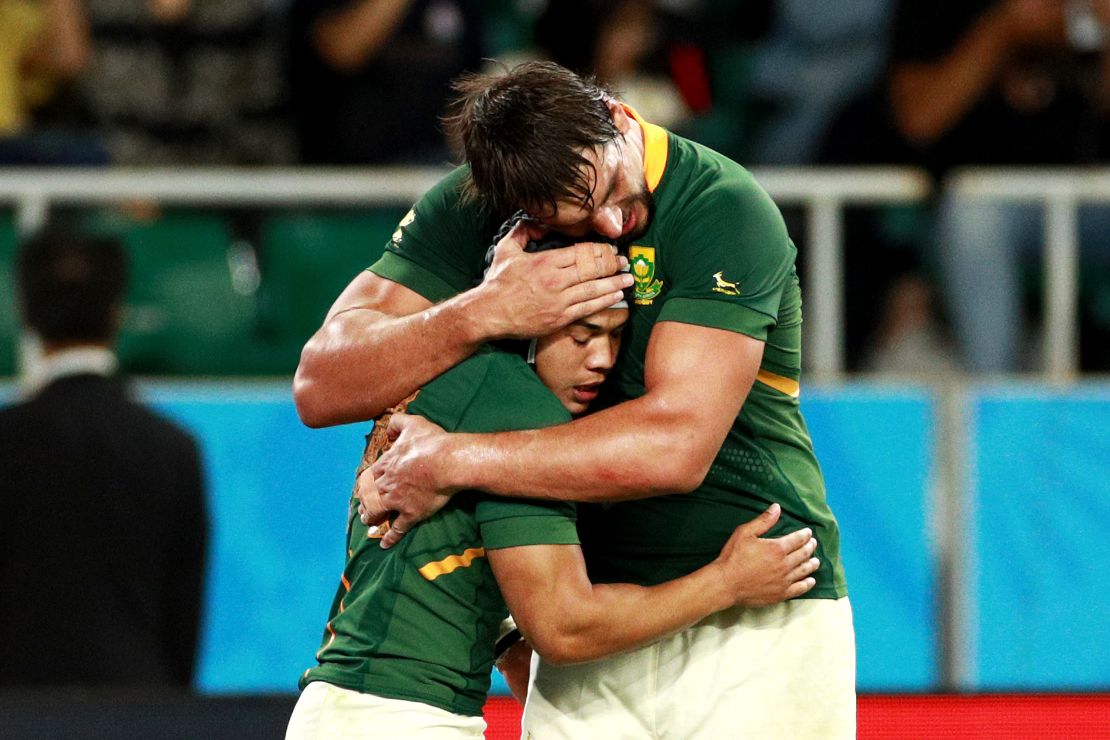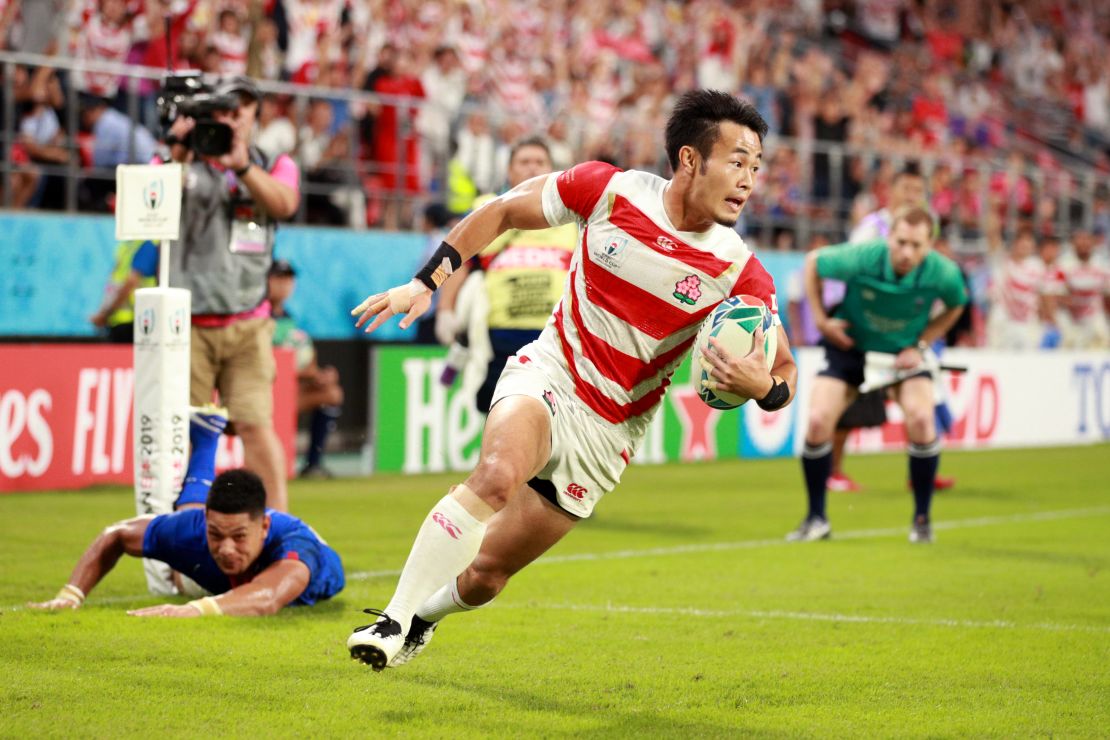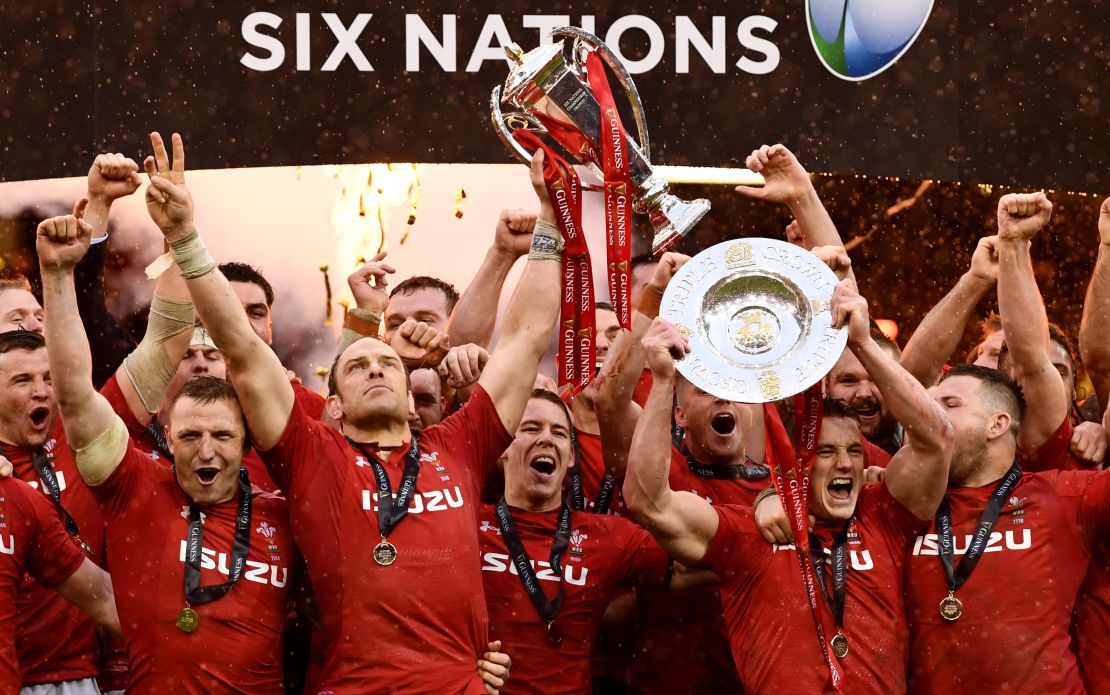The camera pans across the South African Springbok rugby players as they stand shoulder to shoulder, singing their nation’s national anthem. This is an ethnically diverse team representing a country once ripped apart along racial lines. But one physical feature is ubiquitous.
They’re big. Very big. Eben Etzebeth, the 6-foot-7-inch, 258-pound forward sports a pair of biceps the size of ripe watermelons while Tendai Mtawarira’s gruff voice and menacing stare give credence to his well earned nickname “The Beast.”
The camera continues to pan until the lens’ focus suddenly dips. Poking out from the bottom of the screen is the diminutive Cheslin Kolbe.
At 5-foot-6-inches and tipping the scale at a comparatively measly 176-pounds, Kolbe is a Hobbit among cave trolls. But, as was the case in the Lord of the Rings, this little guy is a star of the show.

READ: Mission improbable: How to beat the All Blacks
READ: Controversial photo costs referee Rugby World Cup place
‘A sport for all shapes and sizes’
“He’s phenomenal,” the former England winger Ugo Monye told CNN Sport as he reflected on Kolbe’s talent. “He has some of the fastest feet I’ve ever seen. He’s been one of my favorite players to watch at the World Cup and it shows that rugby, despite some misconceptions, has always been a sport for all shapes and sizes.”
Kolbe has electrified the tournament with mazy runs and fleet-footed side-steps. Every touch of the ball elicits audible gasps as he weaves his between slow moving behemoths. He’s not the only one.
The Rugby World Cup in pictures
But Kolbe isn’t the only pocket speedster at Japan 2019.
Japan wingers Kotaro Matsushima and Kenki Fukuoka dazzled home crowds as they starred in their side’s march to the quarterfinals. Between them they scored nine tries, proving that size doesn’t necessarily count in the sport of bone crunching collisions.
“What we have seen in this World Cup is that attacking positivity has been rewarded and the players willing to run into space have been reaping the benefits,” Monye said. “The big fellas up front will always have their say, that’s just how rugby is. But the magic weavers of the wings, those are the players that get the pulse racing and win over the neutrals.”
READ: RugbyX: ‘Rock-and-roll’ five-a-side rugby seeking to capitalize on Rugby World Cup success
Rugby’s first global superstar combined the pulsating speed of Kolbe and Fukuoka but simultaneously carried the bulk of “The Beast.”
New Zealand’s Jonah Lomu, 6-feet-4-inches tall, 262 pounds, left an indelible mark on the sport. At the 1995 showpiece he scored a joint-record eight tries, one of which was preceded by the bulldozing of England’s Mike Catt who was left flattened by the marauding All Black.
So, who would Monye rather tackle? The nimble flyer or the rampaging giant?
“None of them!” He said with a laugh. “One would hurt me and one would embarrass me and I wouldn’t fancy either of those things happening in front of 50,000 people and millions watching on TV.”
“But that points to the beauty of our sport. Both Kolbe and Jonah, who was my hero growing up, play the same position and yet go about their business in completely different ways. They’re both world class and people pay money to see them.”

READ: A nation united in belief as host Japan secures famous victory
Date with destiny
On Sunday, those who have paid to witness the semifinal clash between South Africa and Wales at the International Stadium in Yokohama will not see Kolbe in action. He has been ruled out of the fixture with an ankle problem that he picked up in the quarterfinal win over Japan.
Kolbe’s replacement is S’bu Nkosi – weight 214 pounds – but just about reaches six feet with his sizable top-knot, and so hardly represents a departure.
Between 2000 and 2014, South Africa won all 16 of its matches against Wales. Since then, the Six Nations champion has won five out of six, including the last four meetings with the Rugby Championship holder.
Knowing there is no margin for error, Springbok coach Rassie Erasmus will likely revert to the methodical, attritional approach that proved so successful against Japan last weekend.

READ: How much does Roger Federer know about rugby?
This all points to a tight affair on Sunday. This will be slugfest.
But that does not mean the speedy backs will be mere spectators. Both teams are expected to launch aerial assaults from the boot which means plenty of work for wings and fullbacks fielding and chasing up-and-unders. In addition, the player who is able to sniff out an opportunity from broken play could be the difference.
Visit CNN.com/sport for more news, features and videos
The winner on Sunday will play either England or New Zealand in next week’s final in Yokohama. South Africa are chasing a third World Cup triumph while Wales are seeking a place in the final for the first time in history.

